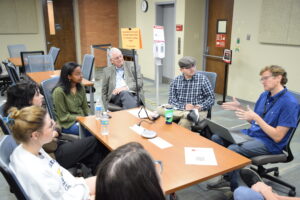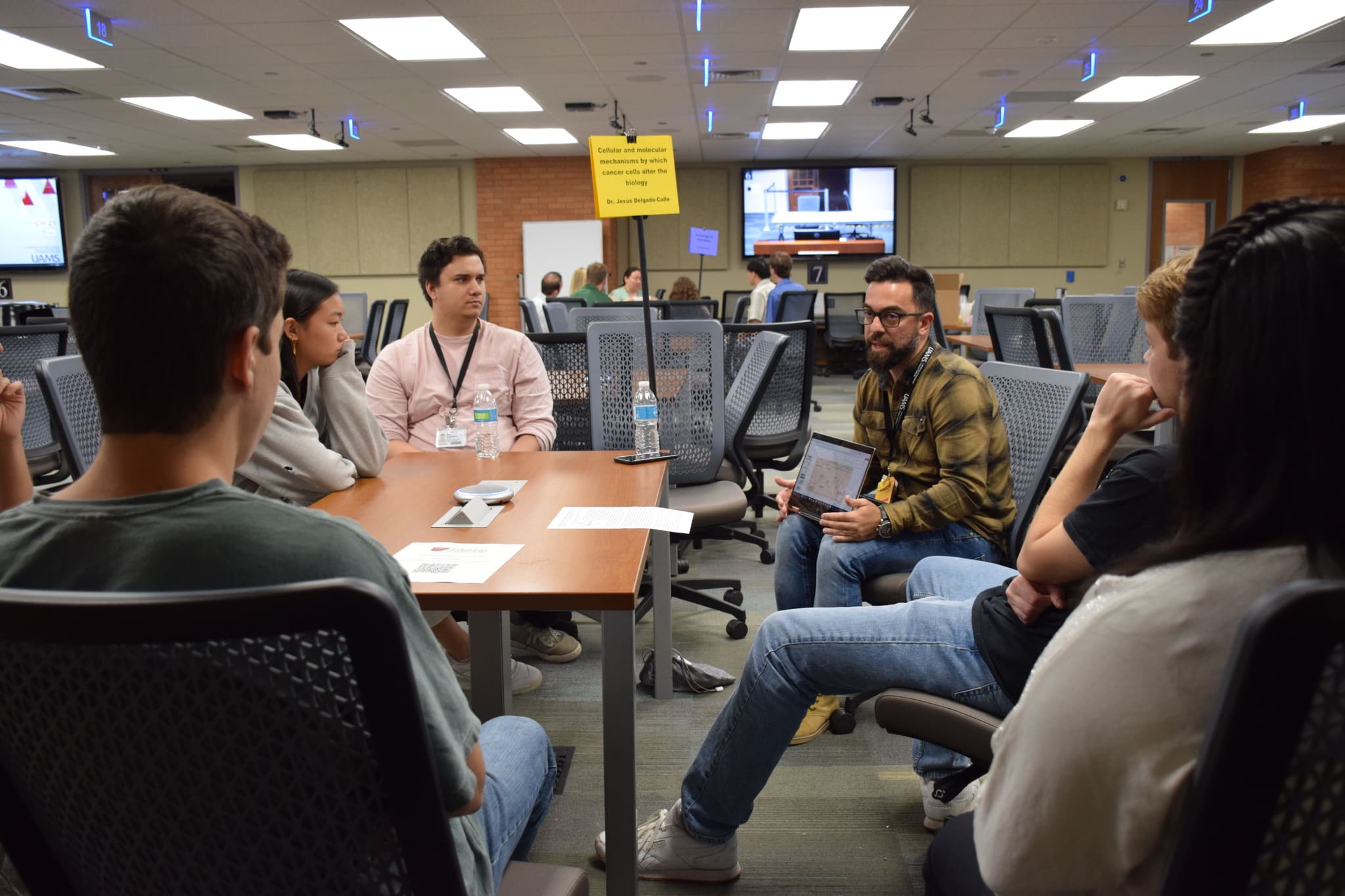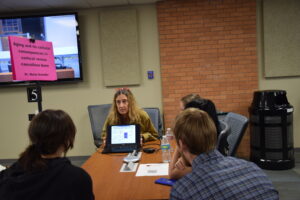UAMS Provides Look at Bone Disease Research for Arkansas Undergraduates
| Twenty-eight undergraduates from colleges across the state recently visited the University of Arkansas for Medical Sciences (UAMS) campus to learn about potential careers in bone disease research.
The Arkansas-IDeA Network of Biomedical Research Excellence (INBRE) sponsored the event.
The students gathered May 23 in the Active Learning Center in the UAMS Library, where they listened as Elena Ambrogini, M.D., Ph.D., and Richard Nicholas, M.D., discussed bone disease cases to illustrate clinical issues with osteoporosis and bone cancers.
Ambrogini, an endocrinologist, is an associate professor in the UAMS College of Medicine Department of Internal Medicine-Endrocrinology and Metabolism, and a member of both the American Society for Bone and Mineral Research, and the Endocrine Society. Her work focuses on the pathophysiology of osteoporosis and metabolic bone diseases.
Nicholas, an expert in orthopaedic oncology, recently retired, was a professor in the College of Medicine departments of Orthopaedic Surgery and Pathology, as well as the director of the Center for Bone and Soft Tissue Tumors at the UAMS Winthrop P. Rockefeller Cancer Institute.
After UAMS Graduate School Dean Robert McGehee, Ph.D., outlined some of the benefits of a research career at UAMS, the students divided into groups. Each small group then spent 25 minutes at each of five tables where faculty members and primary research investigators discussed their particular focus on bone disease.

Assistant Professor Ryan Porter, Ph.D., talks about his research into strategies to prevent articular cartilage degeneration or stimulate cartilage repair.
At one table, Teresita Bellido, Ph.D., an internationally known leader in bone research who is professor and chair of the UAMS Department of Physiology and Biophysics, provided an illustrated handout to help explain different types of bone-related research, as well as why the research is needed and how it has benefited society.
In one example, the students were shown how imaging allows researchers to see the mineral content inside bones. Bellido used another illustration to explain how bone fragility could be determined. Yet another graphic depicted the “bone signatures” of a diabetic mouse as compared to one without diabetes.
She explained how researchers can determine how fast a drug is working and which drugs appear to be the most effective. When a particularly effective drug use is discovered, she said, “then it goes to the clinic for a clinical trial,” which can lead to FDA approval of a new drug.
Bellido showed students how researchers are able to manipulate genomes in organisms to influence bone formation.
“By changing a small thing in the genome, we receive a big change,” she said.
A student from Hendrix College in Conway told Bellido that the information would be helpful as she prepared to participate in a six-week summer program studying animal physiology in the jungles of Costa Rica.
In other roundtable discussions, the undergraduates learned about age-related bone loss and how one group of researchers is trying to identify targetable factors to stop cancer progression in bone and improve clinical outcomes. The students also learned how the cellular consequences of aging affects cortical bone, the outer layer of long bones, compared with cancellous bone, which is a spongy, honeycomb-like structure typically found at the end of long bones. They also heard about ongoing efforts to prevent cartilage degeneration and stimulate its repair.
“The workshop really showed how research is a collaborative field,” one student wrote on an evaluation form after the workshop.
“The researchers were all so different yet interconnected,” another observed.
“Importance of engagement of team members across disciplines became clearer in this workshop,” said another.
One student indicated that the workshop confirmed a desire to pursue research as a career, adding, “I think I want to pursue an M.D./Ph.D.”
The Arkansas-INBRE is an NIH-funded program led by Larry Cornett, Ph.D., distinguished professor in the Department of Physiology and Cell Biology. Tom Kelly, Ph.D., professor of Pathology and a co-investigator on the Arkansas INBRE project, organized the workshop.
“I thought the workshop went really well this year,” said Kelly. As the organizer of this and three previous workshops, each of which has had a different focus, he said this year’s workshop “was among the best attended.”
The workshop was designed to help undergraduates understand the role of research and how it contributes to the development of preventative measures and treatments for osteoporosis, arthritis and bone cancer.
“The workshop is aimed at students with an interest in research,” Kelly said. “We do attract a lot of students who want to become physicians. No matter! Maybe we will sway a few to become researchers or clinical researchers.”

